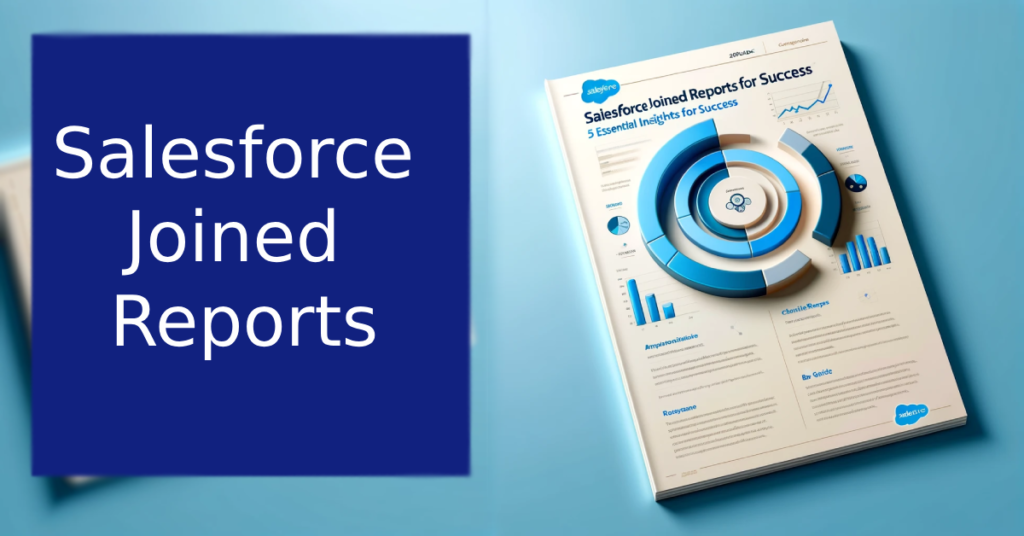
Salesforce Joined Reports are an integral tool within the Salesforce ecosystem, enabling businesses to view and analyze data from multiple report types simultaneously. As a Salesforce consultant, I’ve leveraged these reports to provide actionable insights that drive strategic business decisions. This guide aims to cover the essentials of Joined Reports, blending technical guidance with real-world applications.
Understanding Salesforce Joined Reports
What Are Salesforce Joined Reports? Salesforce Joined Reports allow users to create reports that combine data from up to five different report types, offering a multi-dimensional view of the data. This feature is crucial for gaining a comprehensive overview of related business operations. For an in-depth learning experience on creating a joined report, Salesforce Trailhead offers a useful module which you can explore here.
Benefits of Using Joined Reports in Salesforce The primary advantage of Joined Reports is their ability to provide a holistic view of data across various business processes, facilitating deeper insights and more complex data analysis. This functionality makes them indispensable for businesses that require a nuanced understanding of their operations.
Key Features of Salesforce Joined Reports
Multi-block Reporting One standout feature of Joined Reports is the ability to configure up to five different report blocks, each acting as a standalone report with its own fields, columns, sorting, and filtering. This allows for detailed comparisons and comprehensive analytics. Salesforce Ben provides a detailed guide on setting up these blocks effectively, which can be found here.
Customizable Report Blocks Each block in a Joined Report can be customized independently, providing flexibility and tailored analytical approaches. This feature supports a range of business needs, from sales forecasting to customer service analysis.
Cross-Block Custom Summary Formulas A standout feature of Salesforce Joined Reports is the ability to use cross-block custom summary formulas. This functionality allows users to perform calculations across different blocks within the same report, providing a powerful tool for deeper comparative analysis. For example, you can calculate ratios, differences, or summaries between data elements from different sources, all within a single report. This feature enables a holistic analysis of data that supports better business decisions by illustrating relationships and impacts that aren’t immediately apparent from separate data sets.
How to Create a Salesforce Joined Report
Creating a Joined Report involves selecting the report types and configuring the blocks to display the desired data. Coefficient offers a step-by-step walkthrough on setting up joined reports, which is an excellent resource for those looking to get hands-on with the process. Check it out here.
Best Practices in Building Salesforce Joined Reports
When constructing Salesforce Joined Reports, prioritize clarity and efficiency. Begin with a clear objective to guide your selection of data and configuration of blocks. Apply filters strategically to focus on the most relevant data, enhancing both performance and readability. Regularly review and update the reports to adapt to changing business needs and to ensure continued relevance and efficiency.
Salesforce Reports Conclusion
Salesforce Joined Reports are a dynamic and potent tool for any Salesforce consultant looking to deepen their analytical capabilities. With the right approach, these reports can transform raw data into strategic insights that propel business growth.
FAQs
While robust, Joined Reports can be complex to set up and may not perform well with excessively large data sets without proper optimization.
Joined Reports can be shared via standard Salesforce sharing settings, allowing you to control access based on user roles and permissions.
Yes, they can include data from different standard or custom Salesforce objects, provided there are relationships between them.
Ensure that your data sources are reliable and that your report blocks are properly configured to reflect accurate and meaningful information.
Unlike standard reports, which typically focus on a single object, Joined Reports can combine multiple objects, offering a broader view of the data across different business areas.
For more insights, don’t hesitate to explore other resources available on my blog Justin Pena’s Salesforce Guides.
